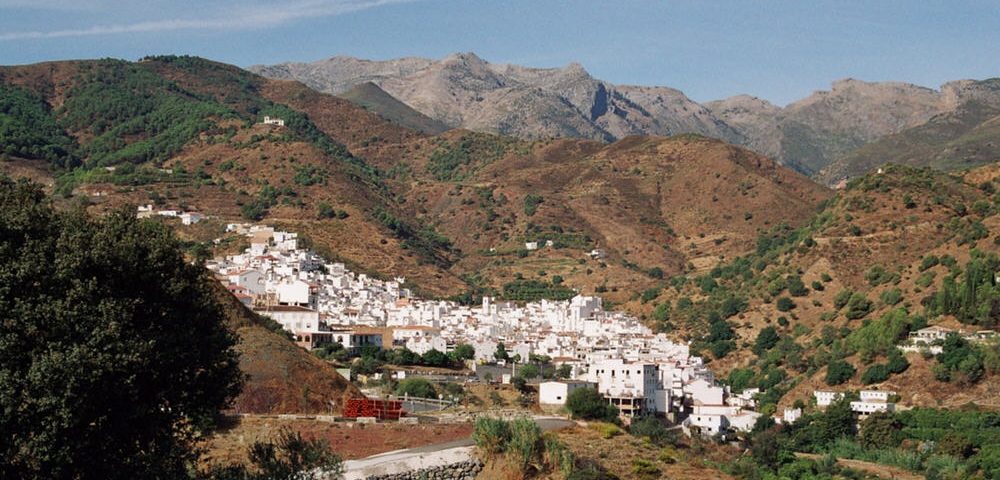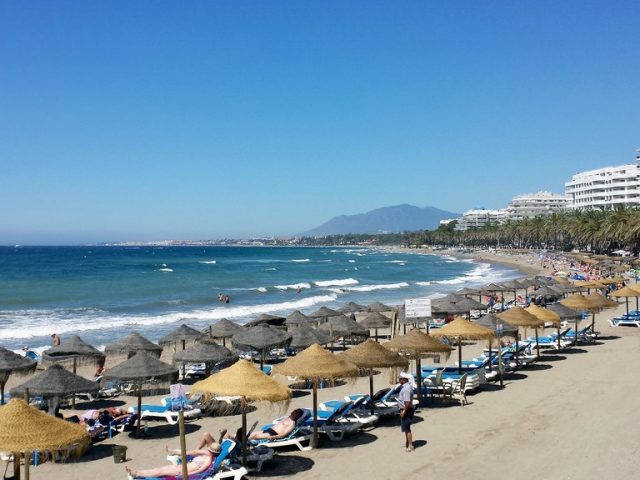- Have any questions?
- +34 951 273 575
- info@allaboutandalucia.com
A breath of fresh air: Exploring the Guadalhorce Valley

Alluring Alora: The heart of the Guadalhorce valley is beginning to unveil its fascinating historical importance
August 10, 2016
Seeing the light on the Costa de la Luz
August 10, 2016By Tom Powell
PICKING my way up a stony mountain ascent, swirling in butterflies, geckos and sun-loving flowers, I was suddenly smacked in the head.
Not by a drunken tourist stumbling out of a bar, but by an enormous falling pine cone, from a towering tree above.
It is hard to believe that this soaring region, on one side of the Guadalhorce valley, is just a 45 minute drive from the bustling Costa del Sol.
I found myself in complete, awe-inspiring solitude on a morning’s stroll through the Sierra de las Nieves natural park, near Tolox.
Bursting with flora and fauna, it is so refreshing to retreat up into this wild and verdant valley, where birdsong quickly replaces the noise of car engines.
Criss-crossed with streams, as well as modern and ancient acequias, or man-made water channels, it is said to be one of the most agriculturally rich areas in Spain.
I began my love affair with the Guadalhorce valley in the small, white village of Tolox, after a spectacular drive taking in Monda and Guaro.
It is a charming place, where life is relaxed, bathing in the shadows of the towering mountains that provide its spectacular backdrop, like an old Andalucian woman sitting contentedly in the shade.
At the entrance to the park is the Fuente Amargosa Health Spa, quietly attracting a steady stream of tourists with its ‘healing’ water, taken from the mountains.
And it is by passing this spa and heading further up the gravelly mountain track that I reached my lodging, Cerro de Hijar hotel.
Along a 4km zig-zagging mountain track, I could tell this place was a bit special. Originally built by the Junta more than ten years ago, it had been typically left unused.
That all changed when three young entrepreneurs – Guillermo, Martin and Eugenio – stepped in and created this tranquil, charming place, with an incredible restaurant serving wild and hearty mountain food.
“Lots of people come here for the spa, but also for walking and exploring the beautiful surrounding area. The location is amazing,” explained Martin.
Like similar hotel, Refugio de Juanar, near Monda, it certainly provides the perfect base for exploring the nearby park, with a pool overlooking the valley to cool off in afterwards.
It also boasts its very own spa, with that same healing water, known as ‘amargosa’ because of its bitter taste.
Sierra de las Nieves is actually a hunting reserve, but also provides a wealth of tourism options for those eager to see what Spain has to offer besides beaches.
Hiking, cycling, off-roading, watersports, horse-riding… you could spend weeks just exploring this park.
The park spreads out right the way across to Ronda, with jagged snow-capped mountain peaks in winter – hence the name.
Some parts are still scarred by the fires that ripped through the forests and plants in the early 1990s, leaving charred tree stumps and black twisted branches in their wake.
The next morning, after a stroll, I headed across to another mountain village Alozaina, which is surrounded by olive groves, orchards and fields.
Stone arches mark the way into the charming centre, dotted with tapas bars, coffee shops and traditional white-washed homes.
Here the striking Santa Ana church dominates the skyline, complete with a courtyard serving up spectacular views towards the Sierra Prieta.
My next stop Yunquera, even higher along a mountain road towards Ronda and El Burgo, also oozed freshness.
Full of house martins and swallows darting overhead on narrow streets and an abundance of life and colour missing from the coast.
El Castillo sits about 500 metres above this town, one of the highest points in Malaga province, and stands boldly as its emblem.
This ancient tower is believed to have been built by Arabs and used as a watchtower during wars. Nowadays, it has been refurbished and functions as an information centre for the Sierra de las Nieves park. It has also been recognised as a site of historical heritage and cultural interest.
The area around the town is home to numerous hiking routes and viewpoints, making Yunquera another great base for exploring the park.
On the other side of the Guadalhorce valley, the Sierra de Mijas is another amazing place for walking and hiking and is also being considered for natural park status.
It is here where the region’s principal towns can be found, including Alhaurin el Grande, Alhaurin de la Torre and Coin – the region’s capital.
These places have proven to be increasingly popular with expats looking to immerse themselves in a more authentic ‘Spain’, while keeping the coast, Malaga airport and big cities within arms reach.
“This region is so popular with Brits, which you might not expect at first,” said David McGovern, owner of Manhattan bar in Alora on the northern side of the valley. “They are close to the coast, but it is more scenic, interesting and varied here in the valley.”
Following the Malaga railway line you head up to Pizarra and Alora on its way towards Antequera and the world famous climbing area of the El Chorro Gorge.
Here, you will find the infamous Caminito del Rey, a spine-tingling walkway along the steep walls of the gorge is due to be reopened to the public next year.
You might also consider visiting the historic spa town of Carratraca, which now has an award winning spa hotel, and then the ancient settlement of Ardales which lies just below the lakes and rivers that feed the Guadalhorce river itself.
Up in the hills take any of the dirt tracks for a stroll and you will quickly come across herds of goats and sheep and often mules ploughing between the olive trees.




